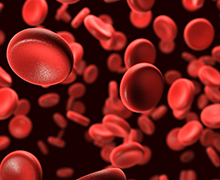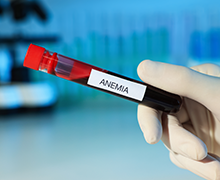Overview, Epidemiology, Pathophysiology
The influence of inflammation on anemia in CKD patients.
Gluba-Brzόzka A, et al. Int J Mol Sci. 2020;21(3):725.
Prevalence, treatment patterns, and healthcare resource utilization in Medicare and commercially insured non-dialysis-dependent chronic kidney disease patients with and without anemia in the United States.
St. Peter WL, et al. BMC Nephrol. 2018;19(1):67.
Vadadustat in patients with anemia and non-dialysis-dependent CKD.
Chertow GM, et al. N Engl J Med. 2021;384(17):1589-1600.
Roxadustat versus epoetin alfa for treating anemia in patients with chronic kidney disease on dialysis: results from the randomized phase 3 ROCKIES study.
Fishbane S, et al. J Am Soc Nephrol. 2022;33(4):850-866.
HIF-prolyl hydroxylases as therapeutic targets in erythropoiesis and iron metabolism.
Haase VH. Hemodial Int. 2017;21(suppl 1):S110-S124.
A real-world longitudinal study of anemia management in non-dialysis-dependent chronic kidney disease patients: a multinational analysis of CKDopps.
Lopes MB, et al. Sci Rep. 2021;11(1):1784.
A trial of darbepoetin alfa in type 2 diabetes and chronic kidney disease.
Pfeffer MA, et al; for the TREAT Investigators. N Engl J Med. 2009;361(21):2019-2032.
Daprodustat for the treatment of anemia in patients not undergoing dialysis.
Singh AK, et al. N Engl J Med. 2021;385(25):2313-2324.
Singh AK, et al. JAMA Intern Med. 2022;182(6):592-602.
Clinical Management Guidelines
Drug safety communication: modified dosing recommendations to improve the safe use of erythropoiesis-stimulating agents (ESAs) in chronic kidney disease.
US Food and Drug Administration. Updated August 4, 2017. Accessed November 3, 2022.
Patient Resources
Informational resources for patients who have anemia and chronic kidney disease.
Anemia in chronic kidney disease.
The National Institute of Diabetes and Digestive and Kidney Diseases (NIDDK)


Burdens of Anemia in CKD
New Avenues to Improve Patient Outcomes
| Faculty: | Alpesh Amin, MD, MBA, MACP, SFHM, FACC, FHFSA, FRCP (Lond); Bruce S. Spinowitz, MD |
| Release: | 11/15/2022 |
| Expiration: | 11/15/2023 |


Pathophysiology of Anemia in CKD
New Avenues to Improve Patient Outcomes
| Faculty: | Ajay K. Singh, MBBS, FRCP, MBA; Bruce S. Spinowitz, MD |
| Release: | 11/15/2022 |
| Expiration: | 11/15/2023 |


Managing Patients with Anemia Associated with CKD
Anemia in Chronic Kidney Disease: New Avenues to Improve Patient Outcomes
| Faculty: | Eldrin F. Lewis, MD, MPH; Ajay K. Singh, MBBS, FRCP, MBA |
| Release: | 11/15/2022 |
| Expiration: | 11/15/2023 |


HIF-PH Inhibitors for Anemia Associated with CKD
Anemia in Chronic Kidney Disease: New Avenues to Improve Patient Outcomes
| Faculty: | Ajay K. Singh, MBBS, FRCP, MBA; Bruce S. Spinowitz, MD |
| Release: | 11/15/2022 |
| Expiration: | 11/15/2023 |






